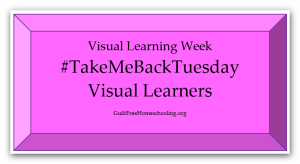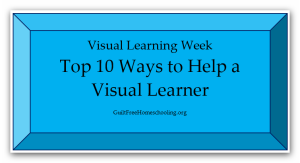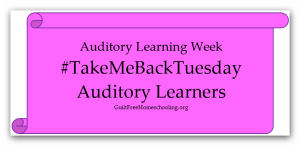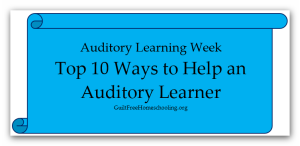 As part of Visual Learning Week, we invite you to read the Visual Learners excerpt from our book, Taking the Mystery Out of Learning Styles. This excerpt focuses on visual learning and explores some of the techniques that are useful in teaching students who are motivated by any opportunity to read, watch, study, and observe. Enjoy!
As part of Visual Learning Week, we invite you to read the Visual Learners excerpt from our book, Taking the Mystery Out of Learning Styles. This excerpt focuses on visual learning and explores some of the techniques that are useful in teaching students who are motivated by any opportunity to read, watch, study, and observe. Enjoy!
For further help on this topic, and to see the rest of the posts in the “Visual Learning Week” series, see this link:
“Visual Learning” topic








 Guilt-Free Homeschooling is the creation of Carolyn Morrison and her daughter, Jennifer Leonhard. After serious disappointments with public school, Carolyn spent the next 11 years homeschooling her two children, from elementary to high school graduation and college admission. Refusing to force new homeschooling families to re-invent the wheel, Carolyn and Jennifer now share their encouragement, support, tips, and tricks, filling their blog with "all the answers we were looking for as a new-to-homeschooling family" and making this website a valuable resource for parents, not just a daily journal. Guilt-Free Homeschooling -- Equipping Parents for Homeschooling Success!
Guilt-Free Homeschooling is the creation of Carolyn Morrison and her daughter, Jennifer Leonhard. After serious disappointments with public school, Carolyn spent the next 11 years homeschooling her two children, from elementary to high school graduation and college admission. Refusing to force new homeschooling families to re-invent the wheel, Carolyn and Jennifer now share their encouragement, support, tips, and tricks, filling their blog with "all the answers we were looking for as a new-to-homeschooling family" and making this website a valuable resource for parents, not just a daily journal. Guilt-Free Homeschooling -- Equipping Parents for Homeschooling Success!

Recent Comments